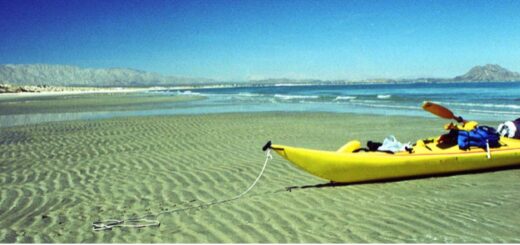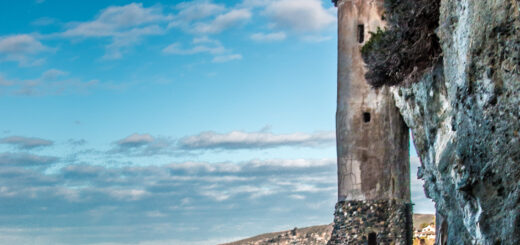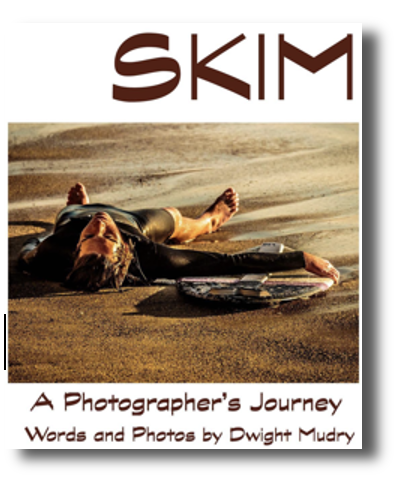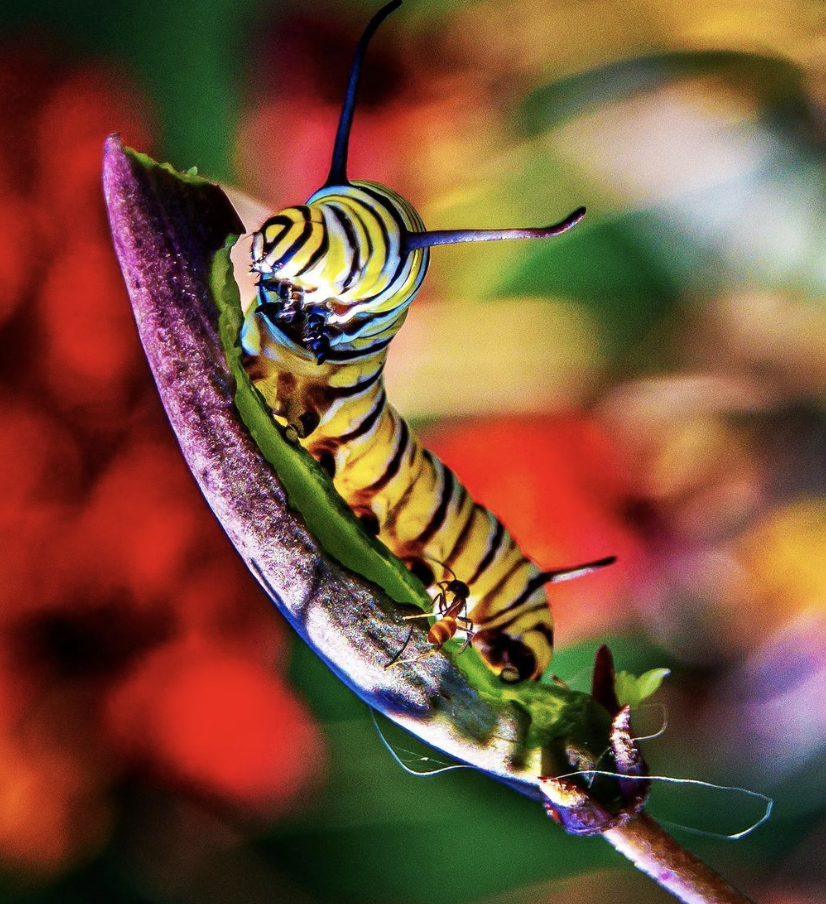Two Miles to the Horizon: It’s a Metaphor for Life
How it Happened
As I felt the looming shadow of my 60th birthday, I knew I needed to mark the occasion with something with meaning for me. I have been kayaking for a few years, so I decided to embark on a daring adventure: a month-long solo sea kayaking trip from San Felipe to Santa Rosalia in the Sea of Cortez, spanning a treacherous and awe-inspiring 340 miles of the rugged Baja California coast.
At first, I anticipated the challenge to be purely physical, but as the days turned into weeks, I quickly realized that the mental fortitude required for such a feat was equally as demanding. As I paddled my way through the Sea of Cortez, I found myself surrounded by an otherworldly landscape. The vibrant blue waters shimmered like a jewel, while the rugged Baja coastline rose up like a craggy fortress against the horizon. The sheer beauty of it all took my breath away.
Yet, beneath the surface of this idyllic paradise lurked a harsh reality. Unpredictable tides,, waves, and fierce winds conspired to upend my kayak at any moment, so I had to be vigilant.
As I made my way through this ever-changing environment, I found solace in the simplicity of my daily existence. With nothing but the sky and sea around me, my kayak became my home, and my paddle was my lifeline. It was almost like a dance, the constant dip and pull on the paddle, first on one side and then the other, a steady rhythm like a heartbeat.
Through it all, I felt a sense of liberation and clarity that I had never experienced before. With each passing day, I grew more in tune with the ebb and flow of the sea, and more at ease with my surroundings. It was as though I had shed the trappings of modern life and discovered a raw, unfiltered connection with the natural world. And that, to me, was the true beauty of this epic adventure.
Perfecting the Stroke: Obsession or Survival?
As I set out on my solo sea kayaking adventure, I knew that it would be difficult and sometimes exhausting. I knew that mastering the most energy-efficient paddling technique would be crucial for me to complete the 340-mile distance. To achieve this, I focused on finding a paddling rhythm that worked for me. I would paddle for two or three hours at a time without stopping, always trying to make each stroke as efficient as possible. I watched the paddle enter the water with a keen eye, searching for any unnecessary splashes or twists that would drain my energy. And when it was time to bring the paddle stroke forward and lift the paddle out of the water, I did so with care, trying to minimize any splash or excess water dripping off my paddle.
In this quest for perfection of my stroke, I discovered that any sound of a splash from my paddling was a measure of efficiency. Every unnecessary sound was an indication of energy being lost, and I simply couldn’t afford to waste any energy. So, I tried to make every stroke as quiet as possible, using the subtlest of adjustments to minimize the drag of the paddle blade. When out of the water the paddles have an adjustment that helps to remove drag from a headwind. One of the blades can be offset from the other so the “dry” blade slices through the air with minimal resistance while the one in the water pushes flat against the water.
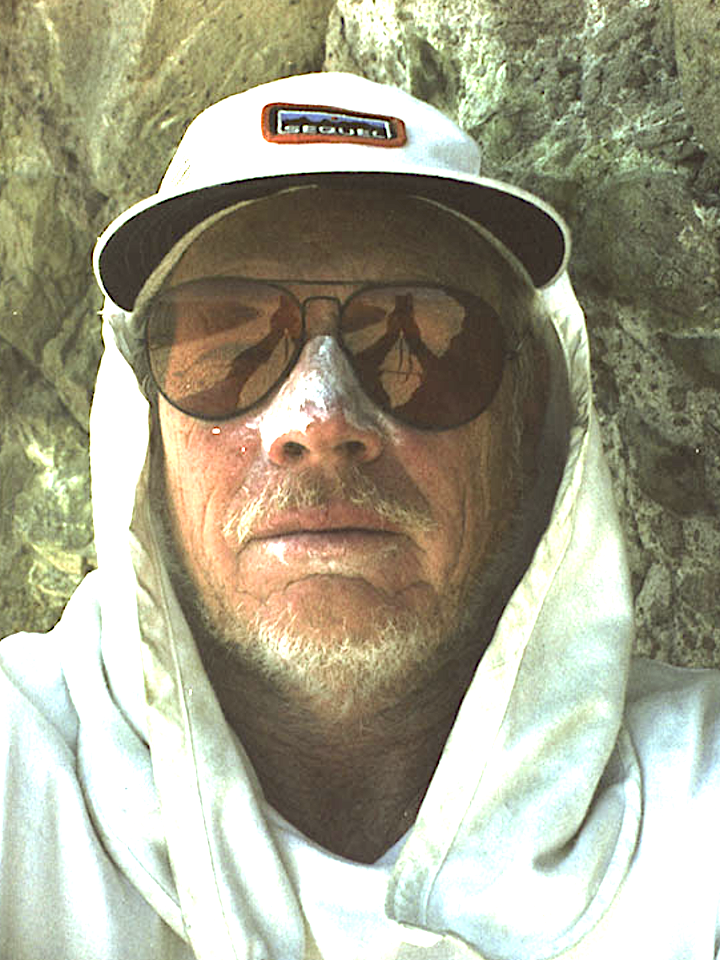
You might think that my obsession with the paddle stroke is an unnecessary mental exercise. But I often counted my strokes and I found that the most efficient stroke I could achieve was about 50 strokes a minute, 3000 strokes an hour, an unbelievable 15,000 or more strokes to cover the 11–12 miles I traveled on a normal day! No, it’s not an obsession, it’s survival.
The quest for the perfect stroke became a way of connecting with the rhythm of the sea and harnessing its power to propel me forward. And with each stroke, I felt a sense of accomplishment, knowing that I was one stroke closer to achieving an adventure of a lifetime.
Is this “Meditation”?
Paddling at a constant pace over long distances can be a hypnotic (some would say mind-numbing) activity, scanning the horizon with only the sound of the very faintest of splashes as the paddle enters and exits the water. When I looked around at my world, I could see it consisted only sky and the sea, split by a horizon, and the nearby shoreline, nothing more. I went days without seeing any person or evidence of humanity, I was one with Nature. Aside from my thoughts there was little interruption: a passing jellyfish, some drifting seaweed that I would collect and examine, interesting bird activity in the distance, occasionally a coyote on the beach hunting for dead fish or birds. As a biologist who spent my early years surrounded by the sea, I am acutely aware that all life on Earth originated in the sea. As I paddled through this primordial landscape, a sense of profound wonder and awe washed over me. With each stroke of my paddle, I was surrounded by a mostly unseen but teeming ecosystem, filled with countless creatures great and small. I was gliding through this wonderland, and I brought very little of the outside world with me. I felt an overwhelming sense of connection to the sea and its biology. As I paddled I realized that I might never again experience such a deep and profound connection to the natural world.
I must admit I have always scoffed at those who practiced meditation, but here I was in a situation where I was paddling uninterrupted for hours, then days, then weeks. Its not something that occurred to me at the time, but, “Could this be meditation?”
I have since done some research and what I experienced during my kayak journey is considered a form of meditation. Meditation is a mental practice that involves focusing the mind on a particular object, thought, or activity to achieve a state of relaxation, inner peace, and heightened awareness. I’m beginning to realize that in my case, the repetitive motion of paddling and the simplicity of my existence allowed me to enter a state of flow, where my mind was fully absorbed in the activity and my awareness of the outside world faded away. From what I can gather, this state of absorption and focus is what is experienced during other forms of meditation, such as mindfulness meditation or mantra meditation.
Why did I scoff at meditation? Apparently, there are several reasons why some people might be skeptical of meditation. First, some might view meditation as a religious or spiritual practice, and therefore may not feel comfortable or interested in participating. Some may view meditation as a passive activity that requires them to stop their usual activities and sit still for an extended period, which can be challenging or boring. Others might believe that meditation is not effective or has no proven benefits, even though numerous scientific studies have shown that regular meditation can lead to reduced stress and anxiety, improved emotional well-being, and even changes in brain structure and function. Finally, some people might have tried meditation in the past and found it difficult to quiet their minds or focus on their breath, which can be discouraging for beginners.
I think my skepticism of meditation was my view that it was somehow religious or spiritual. But my experience on the Sea of Cortez was very definitely a prolonged physical activity that focused my mind and affected my thoughts and perspective. Paddling for hours and days on the vast but lonely expanse of the Sea of Cortez, I experienced how meditation could affect my body and mind. I noticed a sense of calm and focus that I had not experienced before, and it allowed me to view the world around me in a different way. This experience challenged my previous notions of what meditation was and made me realize that it is a real experience, regardless of spiritual beliefs.
Two Miles to the Horizon: It’s a Metaphor for Life
During the many hours of paddling, I could feel the closeness of the horizon and I was frequently curios about how far I could actually see while seated so low in the kayak. Often the first thing I would do after I landed on a beach was to climb up the nearest sand dune or cliff. With my binoculars I would scan the vast expanse of the new horizon and distant shores revealed to me by the higher altitude. Like the calculation of tides, calculation of the distance to the visible horizon was of great importance to the early seafaring explorers and the distance to the horizon is available in tables for just about any height of an observer. Ignoring the effect of atmospheric distortion, the formula for calculating the distance to the visible horizon is the distance to the horizon in kilometers is approximately equal to 3.75 times the square root of the observer’s height in meters. From the tall masthead on a ship of, say, 60 feet in height a lookout can see the horizon out to about 10 miles. From my position sitting low in the kayak my horizon was only visible out to less than 2 miles!
As I made my way in the kayak, I was always about 2 miles from the horizon, never getting any closer, but slowly revealing beaches, birds, floating objects, and everything that came into my limited field of view as I tried to overtake the horizon. With constant paddling I could do about 3 miles per hour, meaning that I could reach the edge of my visible horizon in about 40 minutes. Looking back, I could only see the water’s surface as far as my most recent 40 minutes of travel, all else was lost in the distance. It was like moving through space within an existence that consisted of about 80 minutes of time, only 2 miles in front and 2 miles behind, constantly changing but never increasing. My life on the Sea of Cortez was bounded by the horizon, ever so close but never overtaken.
I think my journey on the Sea of Cortez is a metaphor for life itself, when compared to the immensity of the universe and the eternity of time. Our lives on Earth are like a journey on the Sea of Cortez in that we have a limited perspective and a limited amount of time to experience the world around us. Just as the sea and the universe are vast and infinite, our lives are also a small part of something much larger.
Check out my journey of a lifetime

